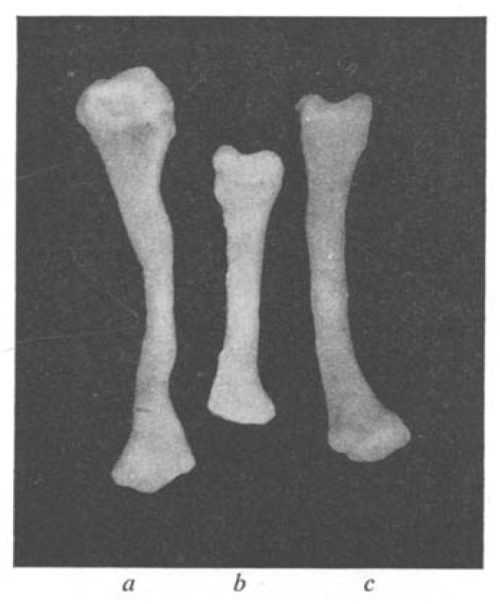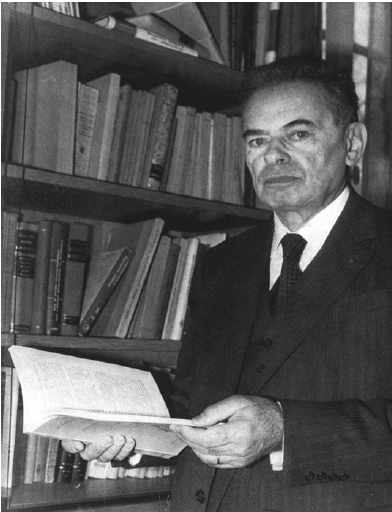First issues – culture most fowl
Posted by Katherine Brown, on 11 February 2025
This post is part of our ‘first issues’ series on the Node – looking at some of the papers, and the researchers behind them, that appeared in the first issues of Journal of Embryology and Experimental Morphology (JEEM) and Development.
This piece turns the spotlight on an article published in the first ever issue of JEEM, over 70 years ago, with a surprisingly modern theme. The paper is written in French, a common occurrence in the early days of JEEM, but now accessible in English thanks to our recent digitisation of the journal’s full archive and the wonders of Google translate. So let’s dive in…
Many of you working with stem cells and organoids have likely used Matrigel or similar cell-derived products for cell and tissue culture. And you will likely be familiar with the frustrations associated with its heterogeneity – one batch can differ from another, making reproducibility a significant problem. For this reason, many researchers have now turned to fully synthetic hydrogels, whose composition is defined and consistent, for in vitro culture.
But you may not be aware that researchers of the 1950s faced similar issues. The search for a synthetic medium that could support organ growth in vitro is the topic of one of the papers in the first ever issue of JEEM. Published by husband-and-wife team Etienne and Emilienne Wolff and others, “Essais de cultures in vitro d’organes embryonnaire en milieux synthetiques” (translated as “In vitro culture tests of embryonic organs in synthetic media”) reports the ability of various synthetic media to support the in vitro growth and differentiation of avian explanted organs. Etienne Wolff, along with Katy Haffen (also an author on the JEEM paper), had previously published a string of papers describing successful short-term culture of a wide range of chicken and duck embryonic organs in their ‘standard medium’ – which contained chicken embryo extract and a glucose-containing solution. In the JEEM paper, they looked to replace this extract with media containing defined concentrations of amino acids and vitamins. These experiments demonstrated the feasibility of such an approach – showing that a fully synthetic medium could support the survival, growth and differentiation of explanted chick embryo gonad, syrinx (the bird vocal organ – I had to look that one up!) and tibia, at least over the course of a few days. The set of papers that established effective in vitro culture conditions for organs opened up opportunities for studying and manipulating organogenesis in ways that were not – at the time – possible in the embryo.

So, who were the team behind this study? Etienne Wolff seems to have been something of a renaissance man. Born in 1904, he first graduated with a degree in literature before turning his attention to science. Although his subsequent career was devoted to biology, he was also made a member of the Académie Française (the body responsible for the rules of the French language). Having graduated with a PhD in 1936, his career was interrupted by the Second World War, where he was captured by the Germans and spent most of the war in prisoner of war camps before being liberated in 1945. Wolff was not idle during his captivity – he created a university within the camp, and wrote two books, “La Science des Monstres” and “Les Changements de Sex”. After the war, he resumed his research in Strasbourg. Having set out in his PhD to reproduce ‘spontaneous monstrosities’ in the avian gonad, to study both the generation of teratomas and the development of these organs, teratology and sexual differentiation were research themes that continued throughout his career. Indeed, through his work in birds, Wolff was (I believe) the first to demonstrate conclusively that intersexuality or sex reversal could be experimentally induced by sex hormones. The desire to better understand male versus female development of the gonad was the driving force for his work on in vitro organ culture – though he also applied these techniques to many other organs.

In 1955, Wolff was appointed Chair of Experimental Embryology at the Collège de France and founded the Nogent Institute of Experimental Embryology and Teratology, where he spent the rest of his research career. For a decade, he also served as the Director of the Collège de France. In 1976, he was succeeded as Director of the Nogent institute by his former student and another developmental biology great, Nicole le Douarin. After his retirement from research, he became active in supporting animal rights, serving as Chair of the Animal Rights, Ethics and Science Foundation in the 1980s. He died in 1996.
Much less information is available about Emilienne Wolff, though she was clearly a distinguished scientist in her own right – serving as a CNRS Director and a laureate of the French Academy of Sciences. At a symposium organised in their honour at the time of their retirement, their colleague Etienne Lasfargues described their research programme at the Nogent Institute thus: “This huge coordinated research, acutely aimed at a deeper knowledge of life, functioned very much like a symphonic orchestra in which Professor [Etienne] Wolff was the maestro, and Madame [Emilienne] Wolff, the concertmaster”.
While the JEEM paper is over 70 years old, its core concern – how to recapitulate embryonic development in an in vitro setting – is a topic that resonates today, with hundreds of labs worldwide working to grow and study organoids of all different types. Though the Wolffs’ approach and outcomes were much less sophisticated than what we can now achieve, their body of work is part of the long history of what is often viewed as a very recent field.
Sources:
Essais de cultures in vitro d’organes embryonnaires en milieu synthétiques
Etienne Wolff, Katy Haffen, Madeline Kieny and Emilienne Wolff. J. Embryol. Exp. Morphol. 1 (1): 55-84 (1953) doi: 10.1242/dev.1.1.55
L’École de Nogent: the contributions of Etienne Wolff and Nicole Le Douarin
Charles Galperin Int. J. Dev. Biol. 49: 79-83 (2005) doi: 10.1387/ijdb.041944cg
The Nogent Institute – 50 Years of Embryology
Nicole le Douarin Int. J. Dev. Biol. 49: 85-103 (2005) doi: 10.1387/ijdb.041952nl
Introduction of Madame Emilienne Wolff and Professor Etienne Wolff
Etienne Lasfargues In Vitro. 1979 Jan;15(1):3-5. doi: 10.1007/BF02627072
NÉCROLOGIE. Étienne WOLFF 1904-1996. Un pionnier de l’Embryologie et de la Tératologie Expérimentales
Nicole le Douarin. Tribute on the website of the Collège de France
Profile of Etienne Wolff on the website of the Collège de France: https://www.college-de-france.fr/en/chair/etienne-wolff-experimental-embryology-statutory-chair/biography
Profile of Etienne Wolff on the website of the Académie Française: https://www.academie-francaise.fr/les-immortels/etienne-wolff?fauteuil=24&election=28-10-1971



 (No Ratings Yet)
(No Ratings Yet)